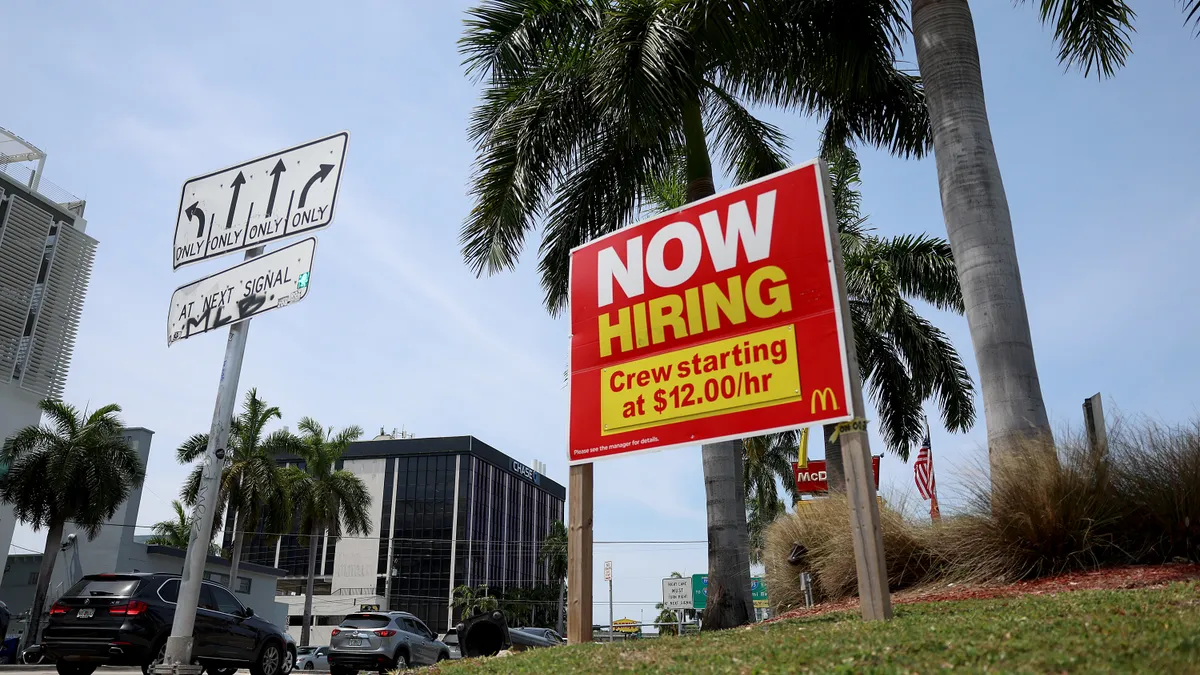While the overall frequency of civil rights cases has shrunk, cases brought under the Americans with Disabilities Act (ADA) have tripled in recent years, the Administrative Office for the U.S. Courts said this summer. And U.S. Equal Employment Opportunity Commission statistics suggest that employment complaints are no exception.
As a result, it may be more important than ever for HR professionals to ensure their organizations are in compliance with the law. HR Dive spoke with three experts to collect best practices that will help keep employers on the straight and narrow when it comes to the ADA.
#1: Write clear employee handbook policies
Employers should have a handbook policy that instructs employees to contact HR if they need accommodations to perform the essential functions of their job, Kimberly Seten, a partner in the Kansas City, Missouri, office of Constangy Brooks, Smith & Prophete LLP, told HR Dive in an interview.
There should also be a policy in the handbook stating that the company does not retaliate against employees who request accommodations, she said. These are "good, baseline practices" because in litigation employers can show that employees were notified both of their right to request accommodations and how to request them, she said.
#2: Don't skimp on training for supervisors and managers
Employers need to train supervisors and managers on recognizing the needs of employees and responding to them in an appropriate and lawful way, Jill Luft, an attorney with Greensfelder, Hemker & Gale, P.C., told HR Dive in an interview. For example, if an employee tells her supervisor she has trouble arriving to work on time because of a medical treatment, a manager without training in accommodations may not realize that the interactive process has been triggered, she said. A trained manager would recognize this and know to involve HR at that point, according to Luft.
It's critical to train front-line managers and supervisors — members of management who have day-to-day contact with employees — on recognizing that an employee is asking for accommodation and what to do, Seten said. Even with the most robust handbook policy, it is often the supervisor who hears the comment that would notify the company that the employee needs an accommodation or may want to talk about an accommodation. Oftentimes, these supervisors and managers lack even a cursory training in the ADA, and they won't know what to do when they encounter an ADA-triggering situation. They may believe an employee is complaining or asking for special favors, she said. Instead, HR may want the matter elevated so it can engage in the interactive process properly and promptly, Seten said.
#3: Request medical documentation only when necessary
Experts have recommended that employers require medical documentation only when necessary. The EEOC takes the position that employees may not even be required to start the interactive process when a need is obvious.
Employers should exercise good judgment in determining when medical documentation from an appropriate professional is necessary, Luft said. If the disability and the need for accommodation is clear, then a simple face-to-face discussion between the employer and the employee regarding the nature of the employee's disability and his or her functional limitations will suffice to determine what types of accommodations can be made so that the employee can successfully perform the job.
In these situations, medical information from the healthcare professionals is not necessary and requesting such documentation is not permissible, Luft said. If an employee who uses a wheelchair is experiencing difficulty maneuvering around a piece of equipment in a factory, for example, then the limitation and subsequent accommodation might be so obvious that the employer and the employee can find a solution without involving a healthcare professional, Luft said.
Requiring the employee to provide medical information from his or her health professional typically comes into play when the disability is invisible to the employer. This situation may arise, Luft said, if the employee has a condition like migraines, diabetes or depression.
#4: Ensure job descriptions stay true to job duties
Job descriptions should accurately outline job duties, experts say. Descriptions can help establish expectations for employees and also set a baseline for what employers do or do not have to accommodate. When carefully crafted and kept up-to-date, job descriptions can be an HR pro's best friend during the interactive process. If not, they can transform into an employer's worst enemy during litigation.
Certain situations also necessitate a healthcare professional's understanding of an employee's duties, Luft said. Job descriptions help medical professionals decide whether or not an employee can perform essential functions with or without an accommodation, define the precise limits caused by a disability, brainstorm potential accommodations and determine whether an accommodation is permanent or temporary. For this purpose, it is critical that a job description reflects what an employee does on a day-to-day basis at work, Luft said.
Job descriptions should be updated when the job changes in a material way or on an annual basis, Luft suggested.
#5: Maintain flexibility
It's important for employers to stay flexible, Luft said. Rigidly following set practices or using certain technologies might cause compliance complications.
An employer who conducts initial job interviews only by phone, for example, would need to find other options to accommodate a deaf applicant, she said. And while flow charts or standardized checklists can help an employer navigate the accommodation process, employers should understand and accept alternatives and recognize other options that may work better for an applicant or employee in a particular situation, Luft said.
#6: Move the interactive process forward
The interactive process is so important, Seten said. Through it, the employer can show that it made every effort to engage with the employee. If the employee refuses to communicate, then the employer can show that it made a good-faith effort and the employee didn't engage. But if the employer is responsible for ending the process too early, that can serve as evidence of an ADA violation, Seten said. Seten suggested that HR be trained on the components of a "good, interactive process system."
The interactive process is a bit like a game of hot potato, Michelle Seldin Silverman, a partner at Morgan Lewis, told HR Dive in an interview: "You don't want to be the one holding the potato when the music stops. Many companies don't understand this dynamic."
If an employer can't give an employee the accommodation requested, many believe the discussion is over and they often fail to offer an alternative because they assume the employee wouldn't accept it or because they didn't take the time to think about an alternative, Silverman said. Employers should offer a reasonable alternative even if they think the employee will reject it. That way, the employee is responsible for the breakdown in the interactive process.
When courts examine failure-to-accommodate claims, they look at who caused the breakdown in the process, Silverman said. Courts examine the "back-and-forth" and consider which person made the final offer. There are plenty of court decisions in which the court said that an employee's refusal to consider any alternatives beyond what he or she requested was not good-faith participation in the interactive process, she said.
#7: Document the dialogue
That said, documenting the interactive process is critical step for the employer, Silverman said. Many employers fail to keep adequate documentation of the dialogue and fail to confirm steps taken and/or agreements made in writing. Keeping thorough, contemporaneous documentation is critical, she said.



















